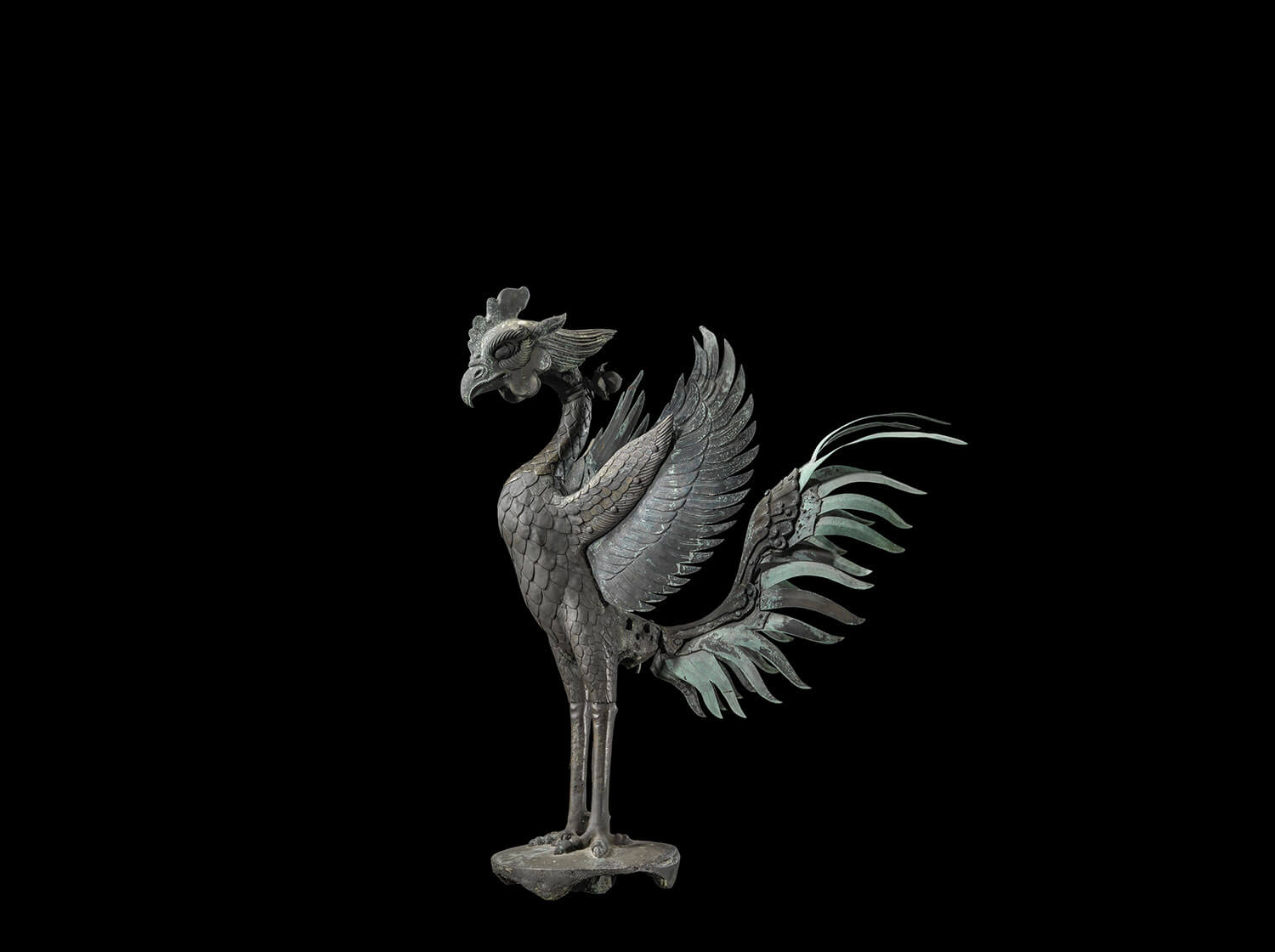Phoenix Statues

The centerpiece of Byodoin is the Amida Hall, which houses the sculpture of Amida (Sk. Amitabha) Buddha of the Pure Land (Jodo). The hall is better known as the Phoenix Hall (Ho-o-do). The name comes both from the building’s physical resemblance to a bird—a central body with outstretched wings—and from the two bronze phoenix statues that decorate its roof. The phoenix symbolizes rebirth in East Asian mythology. The extended wings and puffed out chests of these statues suggest they might be about to take flight, further emphasizing the message of deliverance to Amida Buddha’s Pure Land.
The two phoenix statues were created when the hall was built in the eleventh century. They seem identical from afar, but the phoenix on the north side of the building is four centimeters taller than the one on the south side, and the phoenix on the south side is ten centimeters wider than the one on the north side. The Japanese government designated both statues National Treasures in 1973, after which the temple brought the statues indoors for conservation. The phoenixes now perched on the roof are replicas. The originals are on view in the temple museum. They were once covered in gold leaf like the replicas, but after a millennium of exposure to the elements, the gilding has worn off almost completely. The Byodoin phoenix has been depicted on the 10,000-yen banknote since 2004.

